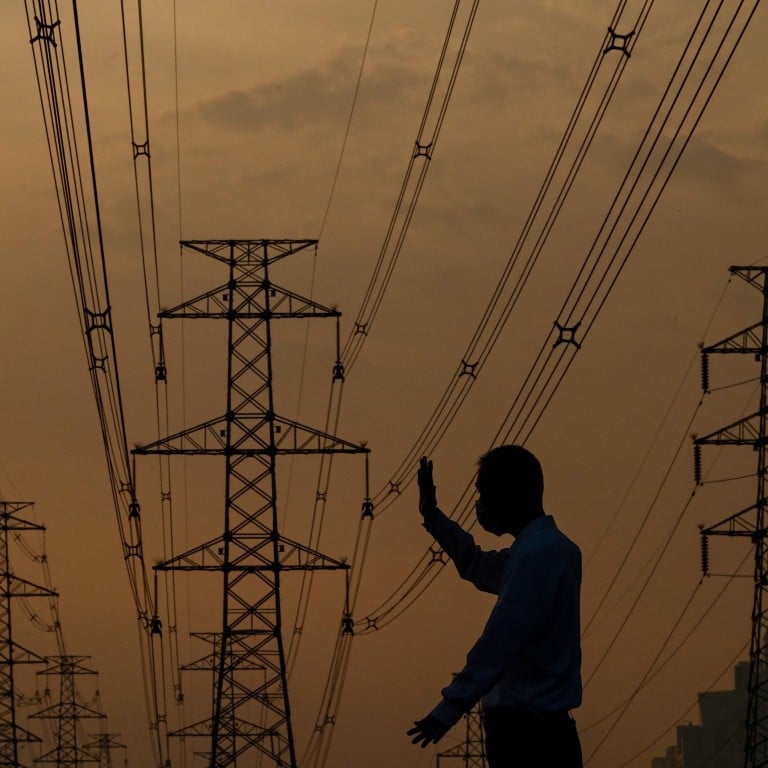
China GDP: how will third quarter growth fare amid a power crisis, sluggish consumption and property curbs?
- After China’s economy expanded by 7.9 per cent in the second quarter, economists have been steadily downgrading growth forecasts for the country
- Poor retail sales, surging raw material costs, power outages and mutant Covid-19 outbreaks have slowed momentum over the past three months
Buffeted on all sides by a property slump, energy crisis, weak consumer sentiment and soaring raw material costs, China’s third quarter economic growth could drop to as low as 4.9 per cent, analysts say.
But after posting 7.9 per cent gross domestic product (GDP) growth in the second quarter, economists have been steadily downgrading their growth forecasts ahead of Monday’s official data release.
Natixis has offered one of the most bearish outlooks, predicting a slump to 4.9 per cent growth in the third quarter, while both Standard Chartered Bank and the median estimate of analysts in a Bloomberg poll said the economy would expand at 5 per cent.
After reaching a peak in the first quarter of 2021, China’s growth rate slowed down in the following months
HSBC said “GDP growth is likely to slow markedly to the 4-5 per cent range in the rest of the year amid multiple headwinds”, and analysts surveyed by Reuters predicted a third quarter GDP growth rate of 5.2 per cent.
“After reaching a peak in the first quarter of 2021, China’s growth rate slowed down in the following months,” said Natixis’ chief Asia-Pacific economist Alicia Garcia-Herrero. “The trend was not unexpected, as the momentum from the post-Covid recovery subsided cyclically after a strong growth for almost a year. This is why our forecast for China’s GDP growth was set very conservatively at the beginning of 2021 [at 7.8 per cent for 2021] compared with the market consensus.
“Still, the market sentiment was less prepared for the inverse U-shaped trajectory in growth, especially after a series of negative events, including the Covid-19 outbreak in summer, the regulatory crackdown, the Evergrande crisis and the recent power crunch. All the above points to a more rapid slowdown in the third quarter of 2021.”
Garcia-Herrero also highlighted poor retail sales and weak consumer sentiment, sluggish investment and foreign trade being dragged down by rising raw material costs.
“We have lowered our third quarter and fourth quarter year-on-year growth forecasts to 5 per cent (from 6 per cent) and 4 per cent (from 5 per cent) on Covid flooding and the lingering effect of regulatory tightening; downgraded 2021 growth forecast to 8.2 per cent from 8.8 per cent,” said Shuang Ding, chief economist for Greater China and North Asia at Standard Chartered Bank.
“Sequential growth likely weakened to minus 0.7 per cent in the third quarter from 1.3 per cent in the second quarter, which would prompt a fine-tuning of regulatory policies in our view. Macro policies may remain supportive but we do not expect aggressive monetary loosening to deal with problems of a structural nature. We continue to call a 50 basis point cut in the reserve requirement ratio in the fourth quarter, but a policy interest rate cut appears unlikely in the foreseeable future.”
Economists surveyed by Bloomberg predict China’s industrial production growth – a gauge of activity in the manufacturing, mining and utilities sectors – slowed to 3.9 per cent in September from a year ago, down from 5.3 per cent in August.
China’s retail sales growth likely accelerated to 3.5 per cent in September from 2.5 per cent in August, according to economists surveyed by Bloomberg.
Natixis predicted a growth rate of 7.8 per cent this year, while Standard Chartered Bank has downgraded its 2021 growth forecast to 8.2 per cent from 8.8 per cent.

.JPG?itok=J8tgfPmW&v=1659948715)